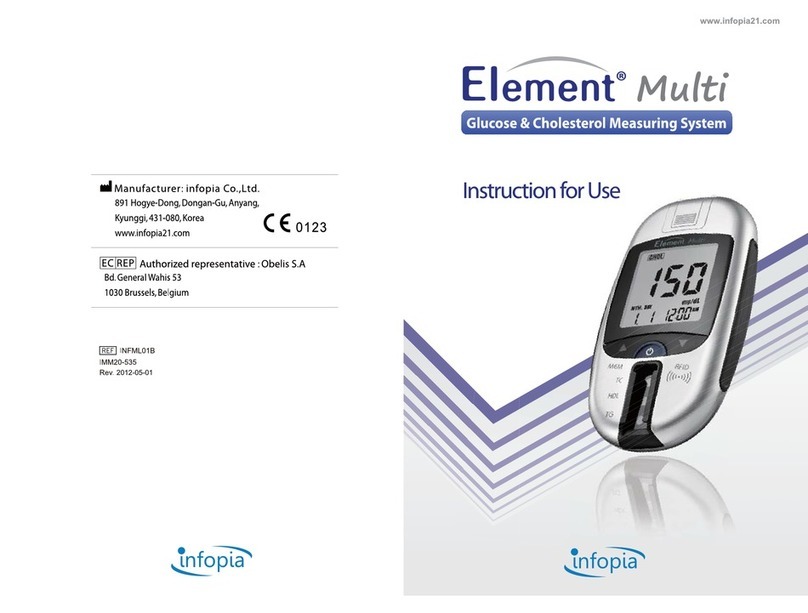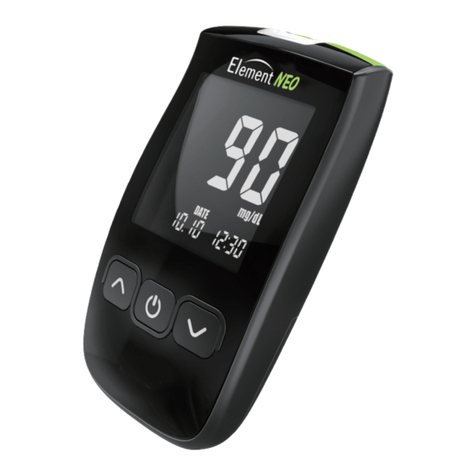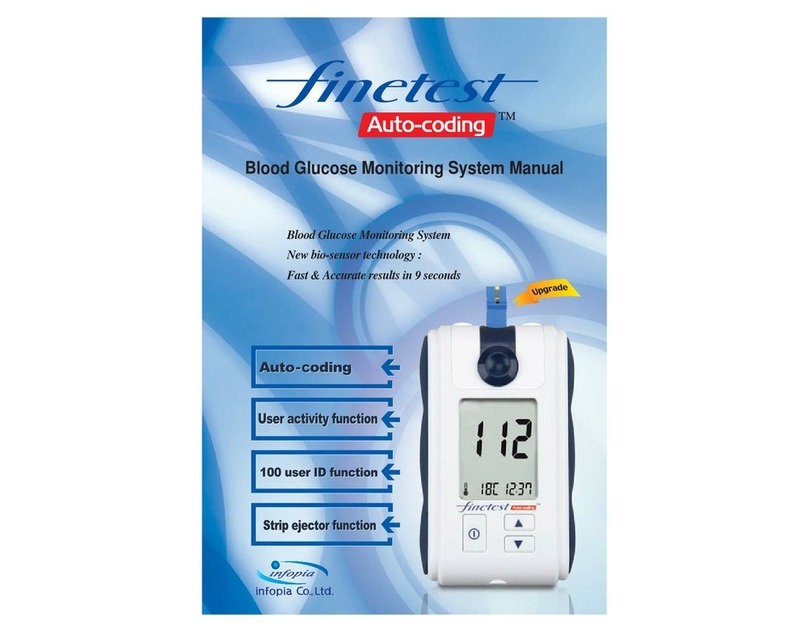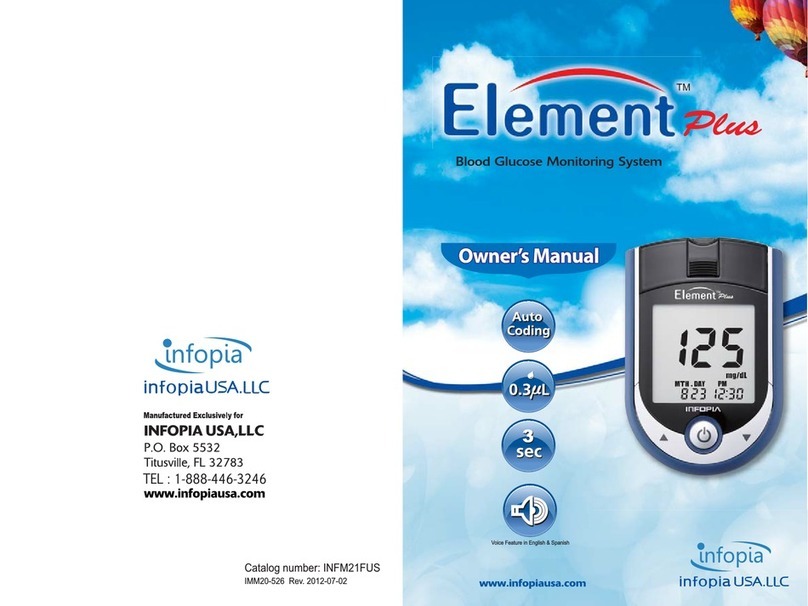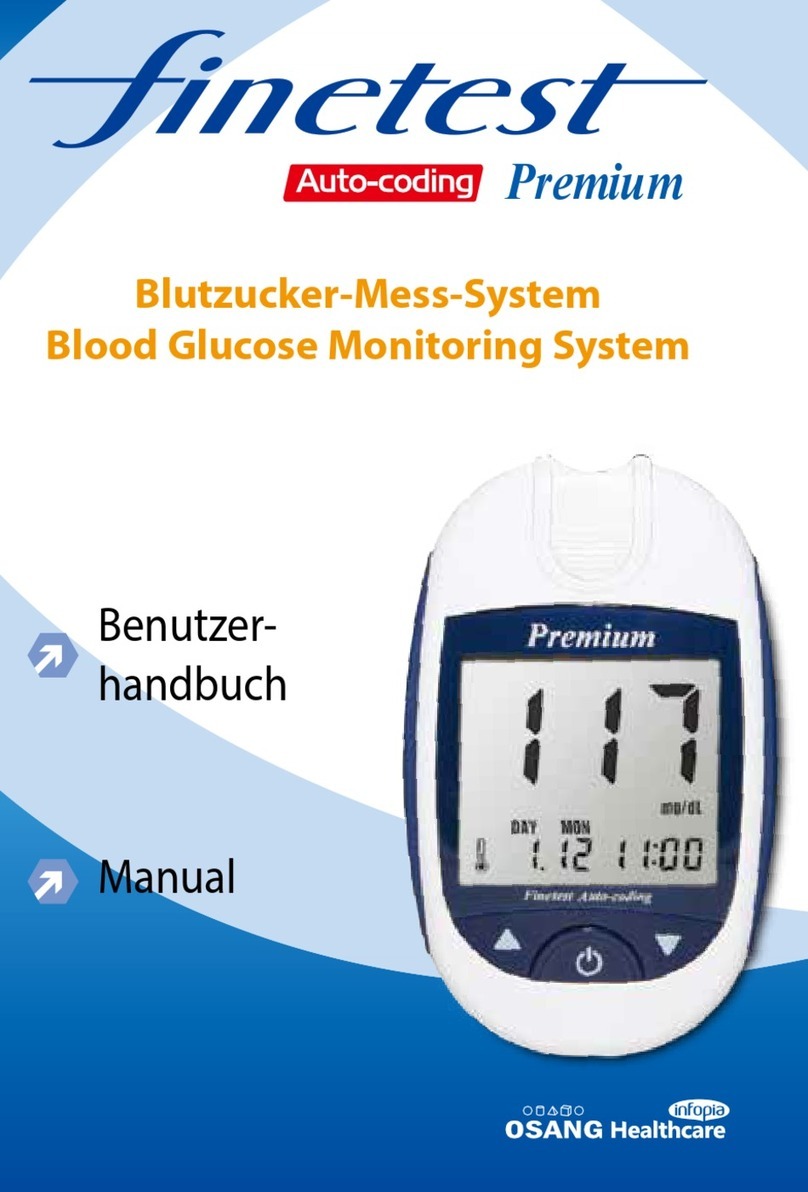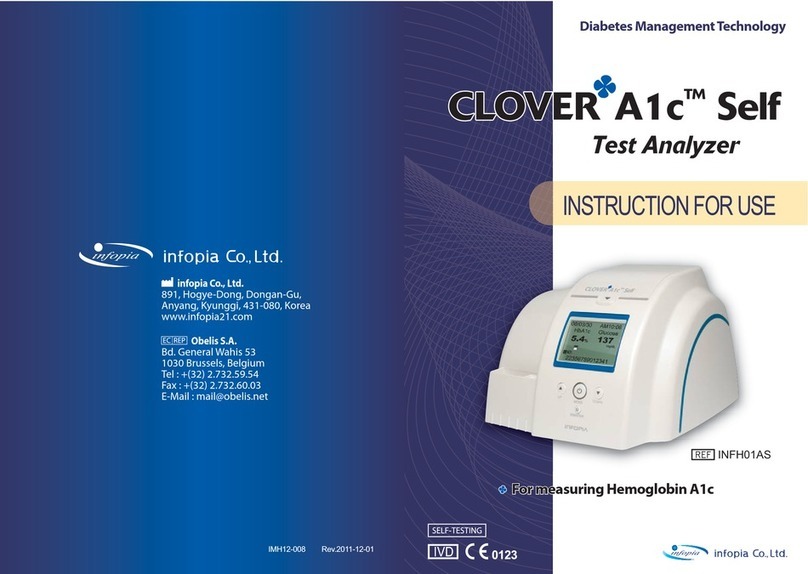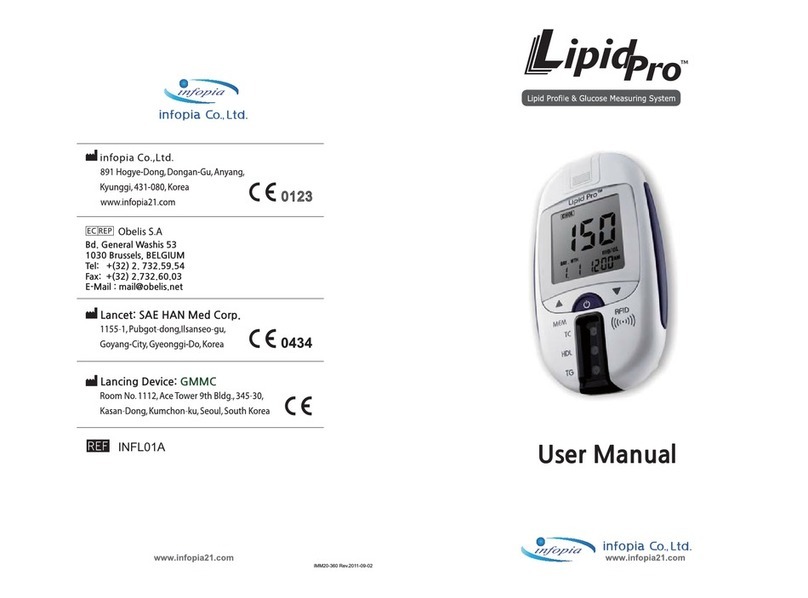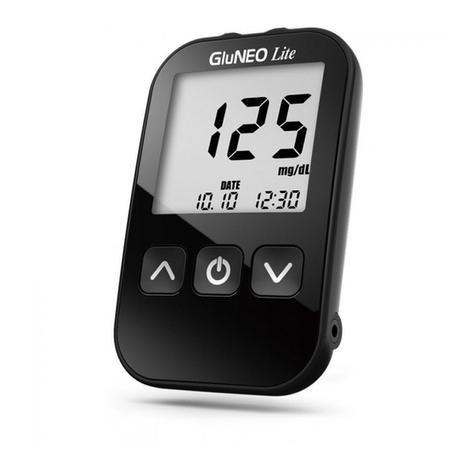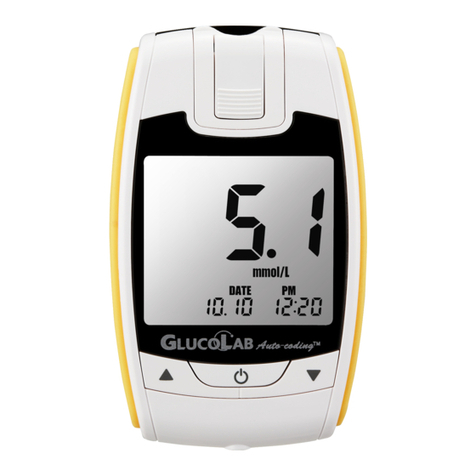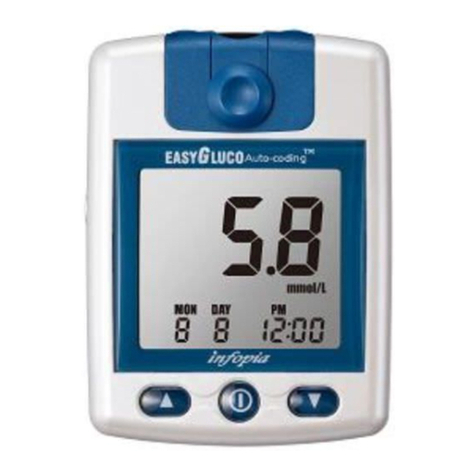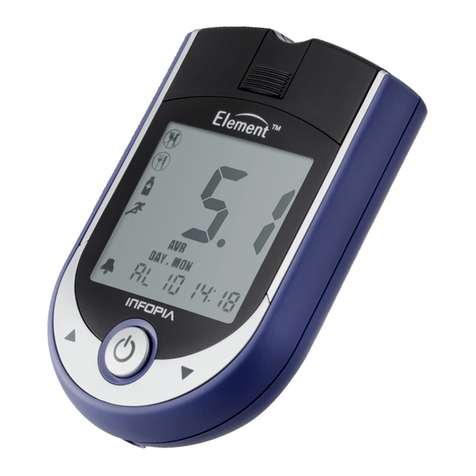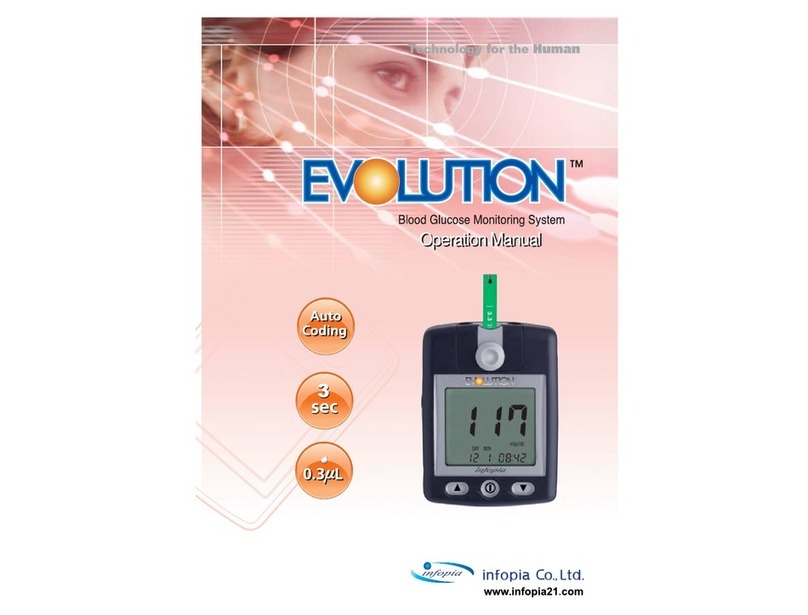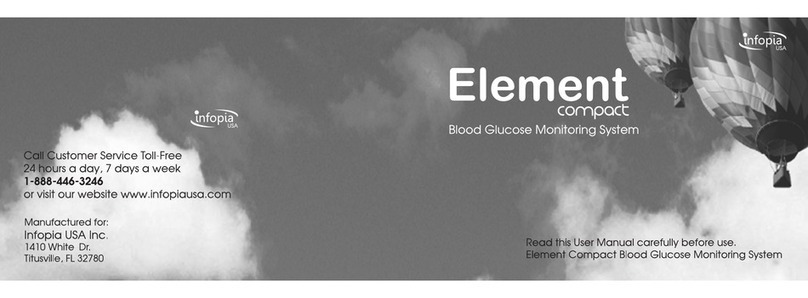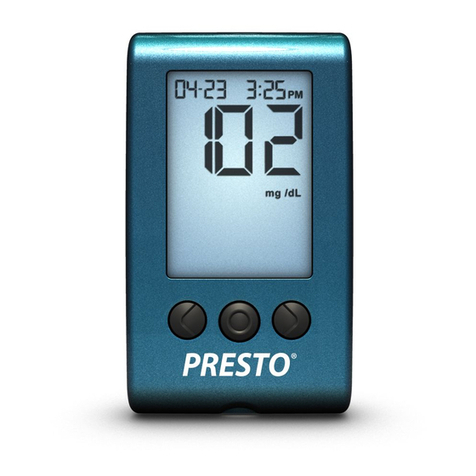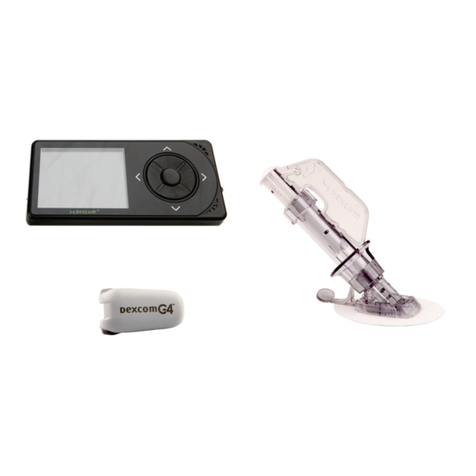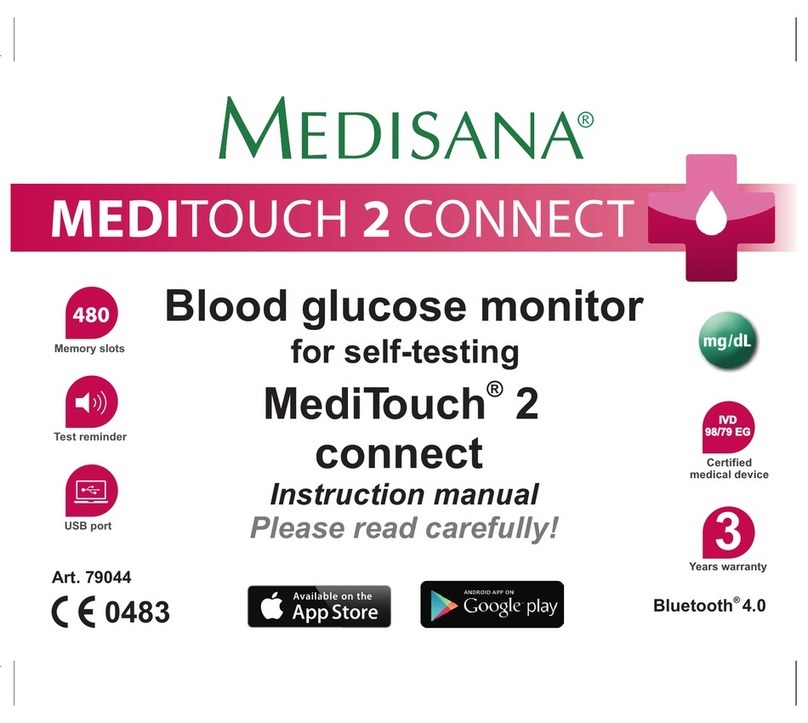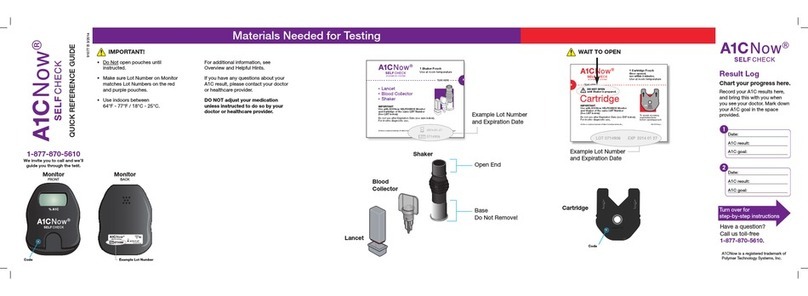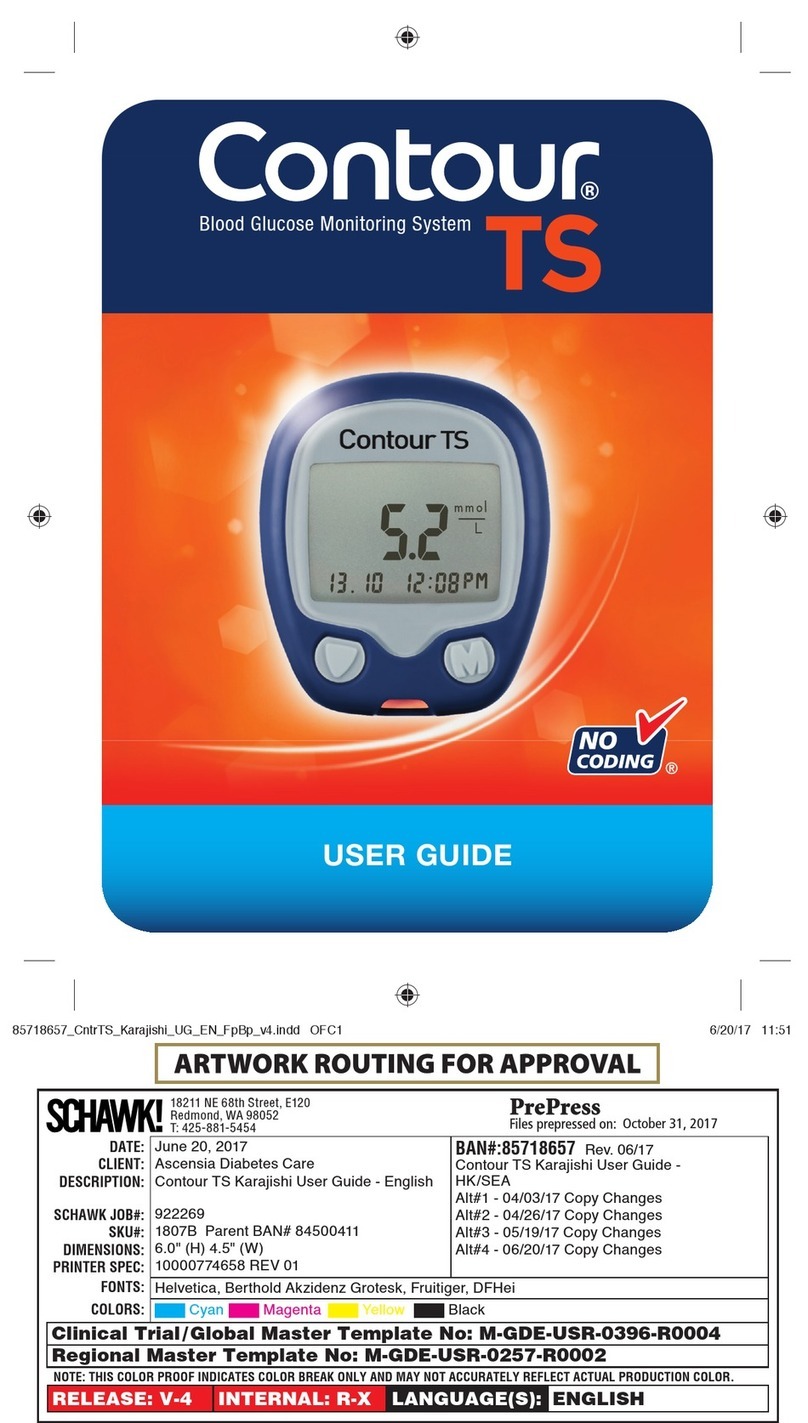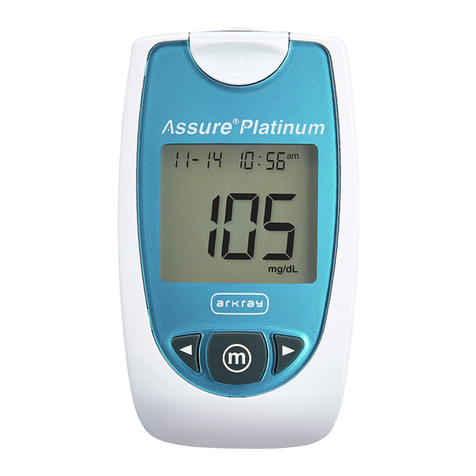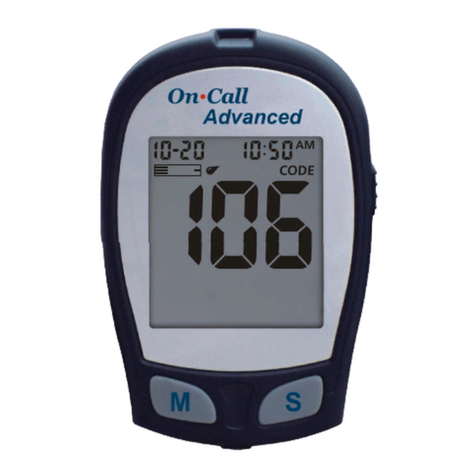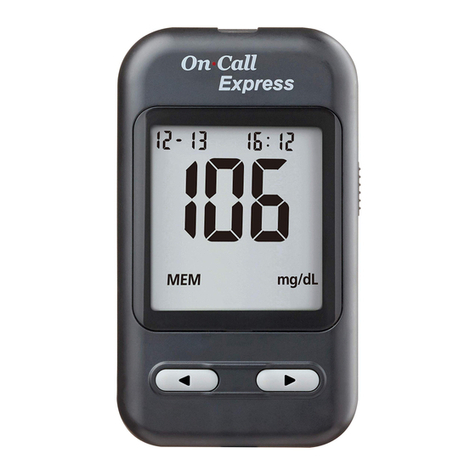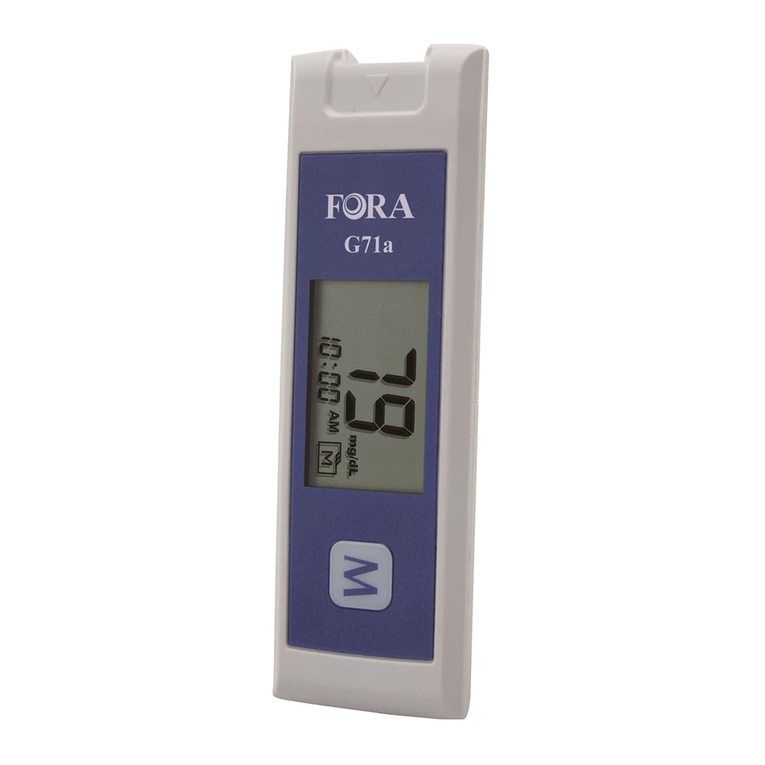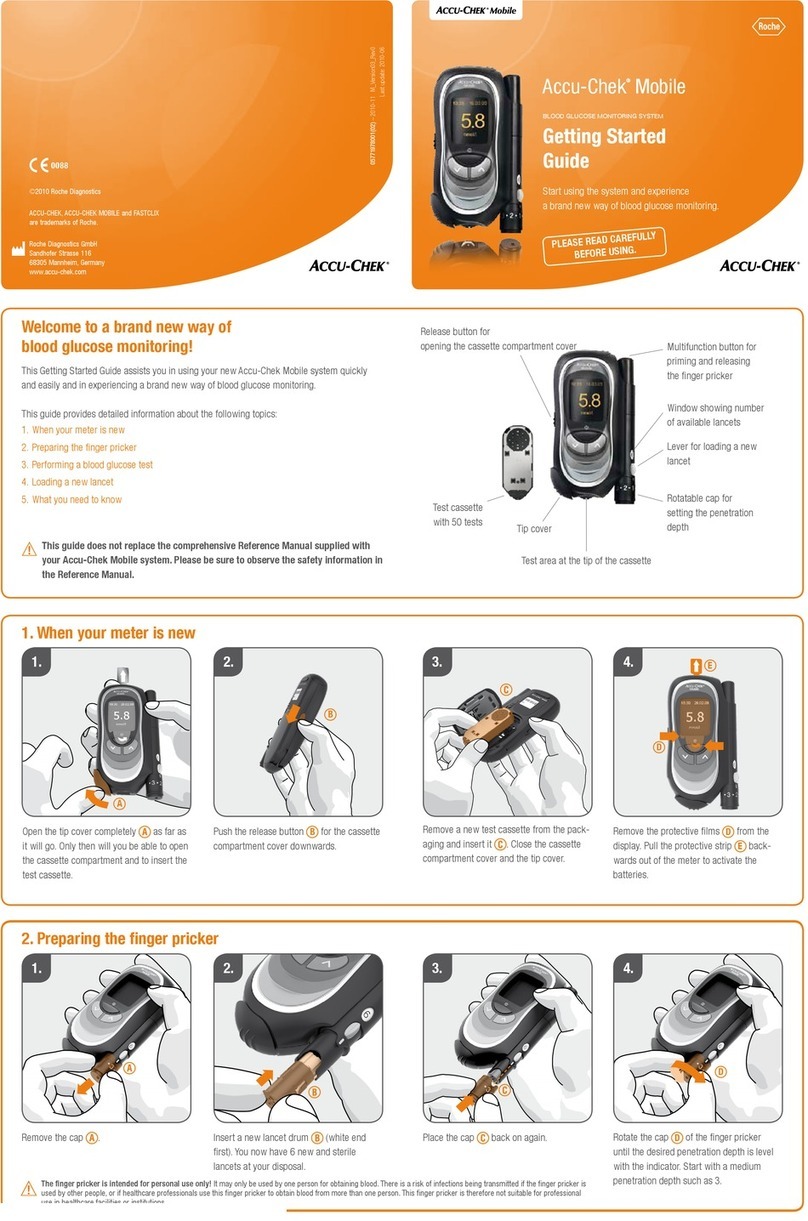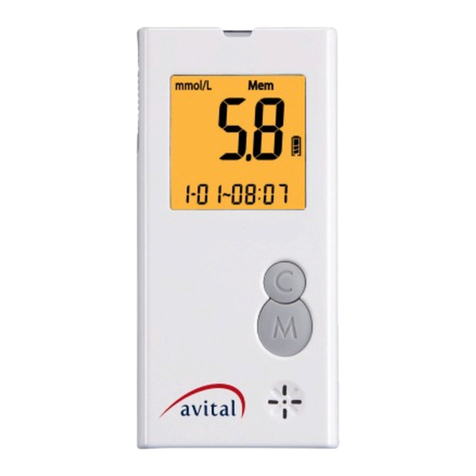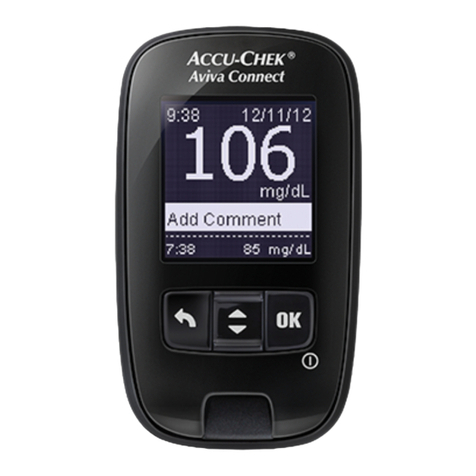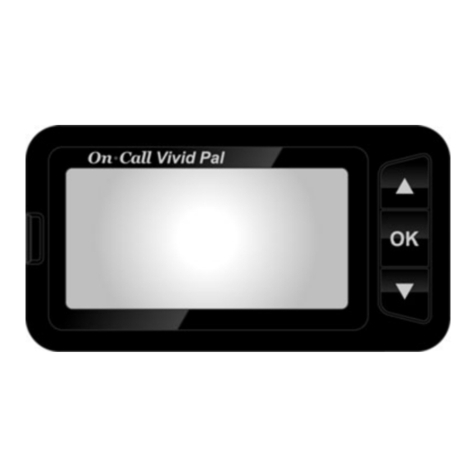• 5 •
Test Principle
Finetest™ Lite
blood glucose test strip is the bio-sensor which is composed of the
FAD-dependent glucose dehydrogenase(enzyme). FAD-GDH(enzyme) quantitatively
reacts with the glucose in the whole blood and the mediator. Glucose in the whole blood
sample reacts with the reagent of the test strip and generates an electrical current. The
amount of current, which is related with glucose concentration, is measured by the current,
for which the method is called amperometry.
NOTE:
1. Blood Glucose Monitoring System may also be called as Blood Glucose Test Meter,
the Meter, Test Meter throughout this manual, for which they have equal meaning to
each other.
2. Blood Glucose Test Strips may be referred to as Te st Strip throughout this manual.
WARNING
1. All parts of the kit are considered bio-hazardous and can potentially transmit
infectious diseases, even after you have taken cleaning and disinfection measures.
2. Always use a new, sterile lancet. Lancets are for single use only.
3. Avoid getting hand lotions, oil, dirt or debris on the meter, lancets or lancet device.
4. Please refer to page 33 for cleaning and disinfecting
Finetest™ Lite
Blood Glucose
Monitoring System.
5. Do not change your medication based on the
Finetest™ Lite
meter test results
without contacting your physician or healthcare professional first.
6. Do not assemble or disassemble the blood glucose test meter.
7. Keep out of direct sunlight.
CAUTION
1. Please keep your monitoring system of the reach of children.
2. Make sure it does not come in contact with water and moisture.
3. Avoid exposure to dirt or moisture.
4. Close supervision may be required when equipment is used by, on, or near children,
handicapped persons or invalids.
5. Do not place the equipment in or near liquid, nor put it where it could fall into liquid. If
the equipment becomes wet, unplug it before touching it.
6. Do not use accessories which are not supplied or recommended by the manufacturer.
7. Do not place anything on top of the equipment.
Table of Contents
1. Learning the System
Intended use of blood glucose test meter--------------------------------------------------- 7
Finetest™ Lite
kit contents ---------------------------------------------------------------------- 8
Finetest™ Lite
meter ----------------------------------------------------------------------------- 9
Finetest™ Lite
meter Display -----------------------------------------------------------------10
Finetest™ Lite
test strip ------------------------------------------------------------------------11
2. Before Testing:
Setting your meter ------------------------------------------------------------------------------13
Auto-coding function ----------------------------------------------------------------------------15
Performing a Glucose Control Solution Test------------------------------------------ 16-19
3. Performing your test:
Testing Blood - preparation -------------------------------------------------------------- 20-21
Performing a blood test with your finger tip ------------------------------------------ 22-26
Test Strip ejector function ---------------------------------------------------------------------27
4. Reviewing Your Results:
Reviewing your blood sugar ------------------------------------------------------------------28
Reviewing your averages ----------------------------------------------------------------------28
5. Alternate Site Test:
Lancing and sampling from an alternate site area --------------------------------- 29-31
Lancing device clear tip is used for alternate site testing-------------------------- 31-32
6. Caring for Your Finetest™ Lite System:
Cleaning your meter and maintenance ---------------------------------------------------33
Storage of your
Finetest™ Lite
system ------------------------------------------------- 34-35
7. Transferring Your Result Data --------------------------------------------------------------36
8. Battery Installation -----------------------------------------------------------------------------37
9. Disposal -------------------------------------------------------------------------------------------38
10. Trouble-shooting------------------------------------------------------------------------- 39-41
11. Inconsistent or Unexpected Test Results----------------------------------------------42
12. Warranty-----------------------------------------------------------------------------------------43
13. Specifications ----------------------------------------------------------------------------------44
14. Symbol Reference-----------------------------------------------------------------------------45
